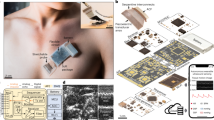Abstract
OBJECTIVE: Whole body air-displacement plethysmography (BOD POD), a new body composition technique, was validated against hydrodensitometry (UWW) in 67 women wearing a one-piece swimsuit (OP) who represent a wide range of body fatness and age. Additionally, the effect of trapped isothermic air in clothing while in the BOD POD was examined by comparing different clothing schemes (a one-piece swimsuit (OP), two-piece swimsuit (TP), a hospital gown (HG), and a hospital gown previously included in a volume calibration (GC)) in a subset of 25 women.
DESIGN: Cross-sectional data analysis.
SUBJECTS: 67 healthy Caucasian females.
MEASUREMENTS: Body density g/cm3 (Db) by BOD POD and UWW.
RESULTS: In 67 females UWW Db (1.030±0.020 g/cm3) was higher (P<0.01) than BOD POD Db (1.028±0.020 g/cm3). This is a difference of 1.0% fat. The R2 was 0.94, SEE was 0.005 g/cm3 and the regression between Db by UWW and BOD POB did not significantly deviate from the line of identity. In the subset group of 25 subjects, OP Db (1.040±0.014 g/cm3) and TP Db (1.040±0.014 g/cm3) were significantly lower (P<0.01) than UWW Db (1.044±0.014 g/cm3) or a difference of 1.9% fat. The R2 was 0.86 and the SEE was 0.005 g/cm3 and the regression between Db by UWW and both OP and TP did not significantly deviate from the line of identity. HG Db (1.056±0.016 g/cm3) and GC Db (1.037±0.016 g/cm3) were significantly different (P<0.01) from UWW Db (1.044±0.014 g/cm3). This difference in density translates to a difference of 5.5% and 3.2% fat respectively. The regression between Db by UWW and both HG and GC significantly deviated from the line of identity.
CONCLUSION: This study supports the use of the BOD POD as a substitute for UWW. However, caution should be made in using the BOD POD if subjects are clothed in anything other than a tight fitting swimsuit.
This is a preview of subscription content, access via your institution
Access options
Subscribe to this journal
Receive 12 print issues and online access
$259.00 per year
only $21.58 per issue
Buy this article
- Purchase on Springer Link
- Instant access to full article PDF
Prices may be subject to local taxes which are calculated during checkout





Similar content being viewed by others
References
Nunez C, Kovera AJ, Pietrobelli A, Heshka S, Horlick M, Kehayias JJ, Wang Z & Heymsfield SB . Body composition in children and adults by air displacement plethysmography Eur J Clin Nutr 1999 53: 382–387.
Biaggi RR, Vollman MW, Nies MA, Brener CE, Flakoll PJ, Levenhagen DK, Sun M, Karabulut Z & Chen KY . Comparison of air-displacement plethysmography with hydrostatic weighing and bioelectrical impedance analysis for the assessment of body composition in healthy adults Am J Clin Nutr 1999 69: 898–903.
McCrory MA, Gomez TD, Bernauer EM, Mole PA . Evaluation of a new air displacement plethysmograph for measuring human body composition Med Sci Sports Exerc 1995 27: 1686–1691.
Zumdahl SS . Gases. In: Chemistry. Lexington, DC: Heath and Company; 1989; pp 178–180.
Sly PD, Lanteri C, Bates JHT . Effect of the thermodynamics of an infant plethysmograph on the measurement of thoracic gas volume Pediatr Pulmonol 1990 8: 203–208.
Taylor A, Scopes JW, du Mont G, Taylor BA . Development of an air displacement method for whole body volume measurement of infants J Biomed Eng 1985 7: 9–17.
Dempster P, Aitkens S . A new air displacement method for the determination of human body composition Med Sci Sports Exerc 1995 27: 1692–1697.
Dubois AB, Botelho ST, Bedell GN, Marshall R, Comroe JH . A rapid plethysmographic method for measuring thoracic gas volume: a comparison with a nitrogen washout method for measuring functional residual capacity in normal subjects J Clin Invest 1956 35: 322–326.
Wilmore JH . A simplified method for the determination of residual lung volume J Appl Physiol 1969 27: 96–100.
Lohman TG . Applicability of body composition techniques and constants for children and youths Exerc Sport Sci Rev 1986 14: 325–357.
Author information
Authors and Affiliations
Corresponding author
Rights and permissions
About this article
Cite this article
Fields, D., Hunter, G. & Goran, M. Validation of the BOD POD with hydrostatic weighing: Influence of body clothingin. Int J Obes 24, 200–205 (2000). https://doi.org/10.1038/sj.ijo.0801113
Received:
Revised:
Accepted:
Published:
Issue Date:
DOI: https://doi.org/10.1038/sj.ijo.0801113
Keywords
This article is cited by
-
The association between food desert severity, socioeconomic status, and metabolic state during pregnancy in a prospective longitudinal cohort
Scientific Reports (2023)
-
Associations of age and body mass index with hydration and density of fat-free mass from 4 to 22 years
European Journal of Clinical Nutrition (2019)
-
Multifactorial cycling performance of Cyclists and Non-Cyclists and their effect on skin temperature
Journal of Thermal Analysis and Calorimetry (2017)
-
Reliability and Intermethod Agreement for Body Fat Assessment Among Two Field and Two Laboratory Methods in Adolescents
Obesity (2012)



